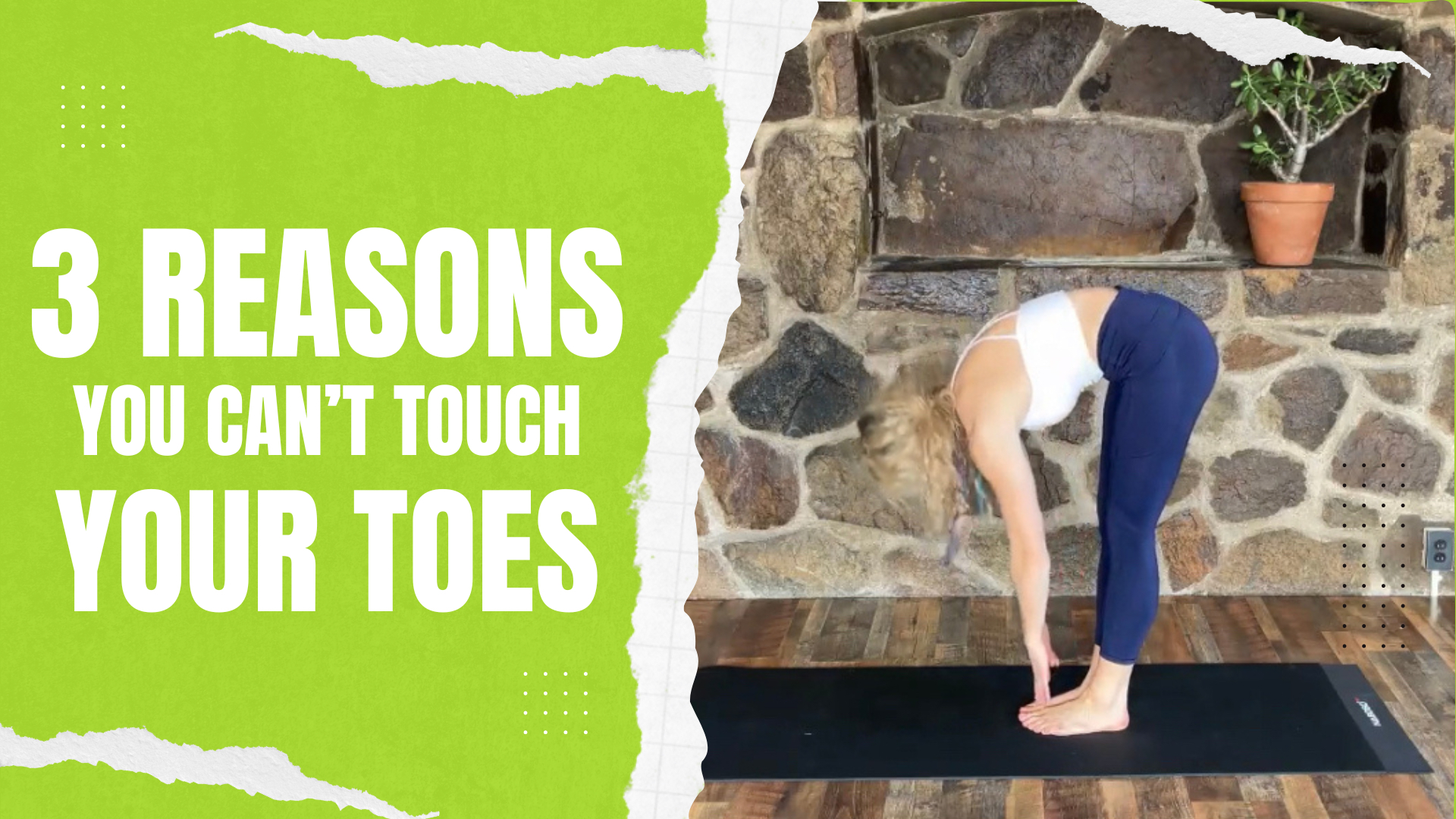Today, we are going to discuss three different reasons why you might have tight hamstrings. Whether it’s you or someone you know, tight hamstrings are a common issue. I’ve worked with many patients and clients over the decades, and it’s essential to understand the underlying causes.
Rather watch or listen?
At this point, I’ve encountered numerous cases of tight hamstrings. However, the reasons behind tight hamstrings can vary significantly from one person to another. The three key factors we’ll explore are:
3 Reasons You Might Have Tight Hamstrings
1. Mechanical Tension
When we think of mechanical tension, imagine our body’s tissues as elastic, like a spring.
Our fascial tissue, which envelops our muscles and organs, is responsible for maintaining elasticity and tension. However, various factors such as muscle imbalances, compensations, injuries, or conditions like torn hamstrings and tendinopathies can disrupt this tissue’s integrity. This disruption can lead to mechanical tension, including fibrosis, where the tissue loses its elasticity due to change. Emotional trauma can also have its impact on this over time.
To address this, consider techniques like self-myofascial release, using balls or foam rolls to enhance tissue elasticity.
2. Neurological Tightness
Neurological tightness involves an increased neural drive to the hamstrings or the body’s posterior chain, back of the body. This can manifest as shaking when attempting movements like touching your toes or pulling your hamstring back. In such cases, the neural “volume” is dialed up, and we need to focus on inhibiting it, essentially turning down the volume.
Neurological tightness can also be related to nerve tension, often stemming from conditions like sciatica. Reprogramming this requires specific exercises, such as leg lifts against a wall, gradually reducing the feeling of increased pulling behind the knee while promoting a comfortable stretch. Then, engaging the core and creating tension in the body further aids in reprogramming the nervous system while actively pulling the leg away from the wall.
3. Stability Motor Control Dysfunction
Stability motor control dysfunction occurs when there’s a lack of coordination, timing, or sequencing in the core and pelvis, making it challenging to perform certain movements, like touching your toes. Even if there’s no significant tissue tightness, this dysfunction can mimic the symptoms of neurological tightness or even mechanical tension.
An effective remedy is to introduce stability and improved sequencing. For instance, try placing a block between your knees and elevating or lowering your toes while reaching down to touch them. This simple adjustment changes weight distribution and core activation, often leading to quick improvements.
Key Takeaways
It may be challenging to self-assess these issues, but consider your history, any past injuries or trauma to your legs, and how your hamstring tissue feels overall. Additionally, assess how quickly you can change your movement pattern when activating your core, as this might indicate a stability motor control issue. If you experience increased shaking and poor control, it could be related to neurological tightness.
In conclusion, not all tight toe touches are the same. Each case should be addressed uniquely, as optimizing this fundamental movement pattern is crucial for overall function and performance in daily life.
If you found this information helpful, please like, share, and subscribe to our YouTube channel, The Movement Paradigm®, for weekly tips on mindset, nutrition, and movement. Explore our other resources for in-depth insights into core function, hip mobility, pelvic floor health, and more to better understand your body and how to optimize it.
If you’d like to learn more about how we can assist you on your journey, please don’t hesitate to reach out for a discovery session. We look forward to helping you on your path to wellness.
Other things that might interest you:

